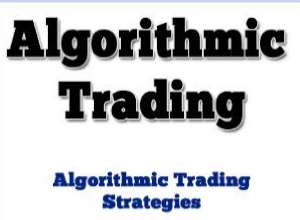Algorithmic trading
Algorithmic trading has become increasingly popular among Forex traders who are looking for a more efficient way to trade. These systems allow traders to essentially automate their trading activities based on rules that have been programmed into them. Algorithmic trading has long been popular in other financial markets such as the stock market. Only recently become more commonly used by currency traders. According to a report by Greenwich Associates on 2014 trends in electronic forex trading, the percentage of market participants using algorithmic trading has grown from 7% in 2012 to 11% in 2014.
What are the benefits of algorithmic trading?
It removes the effect of emotion in your trading decisions. One of the most difficult things for many traders is not to react emotionally when their trades turn against them. But when you use an algorithmic system, this is no longer a consideration since it implements trades automatically based on the instructions that have been programmed into it.
It helps you stick with your trading plan. There is always the temptation among traders to deviate from their plan in order to eke out a little more profit or to not see a trade through for fear that they will lose money. But since your trading guidelines have already been programmed into the system, maintaining discipline is not difficult. The system does not try to interpret the rules or adjust them based on the perceived market conditions, it simply follows them.
It allows you to test your plan before you implement it. Automated systems allow you to backtest your plan by applying it to historical data. Thus, you can fine tune it and ensure that it works the way you want it to before you start trading with live money.
Drawbacks of algorithmic trading?
You still need to monitor the system. Contrary to common belief, algorithmic systems are not designed to be turned on and allowed to do their thing. Because there is still the possibility for mechanical problems, you still need to occasionally monitor it to ensure that these problems are resolved quickly so that your trading proceeds smoothly.
There is the risk of over-optimizing your system. There is a natural desire on the part of traders to create an infallible plan. Unfortunately, these plans usually fail to perform well when applied to live trading even though they look good in theory.
